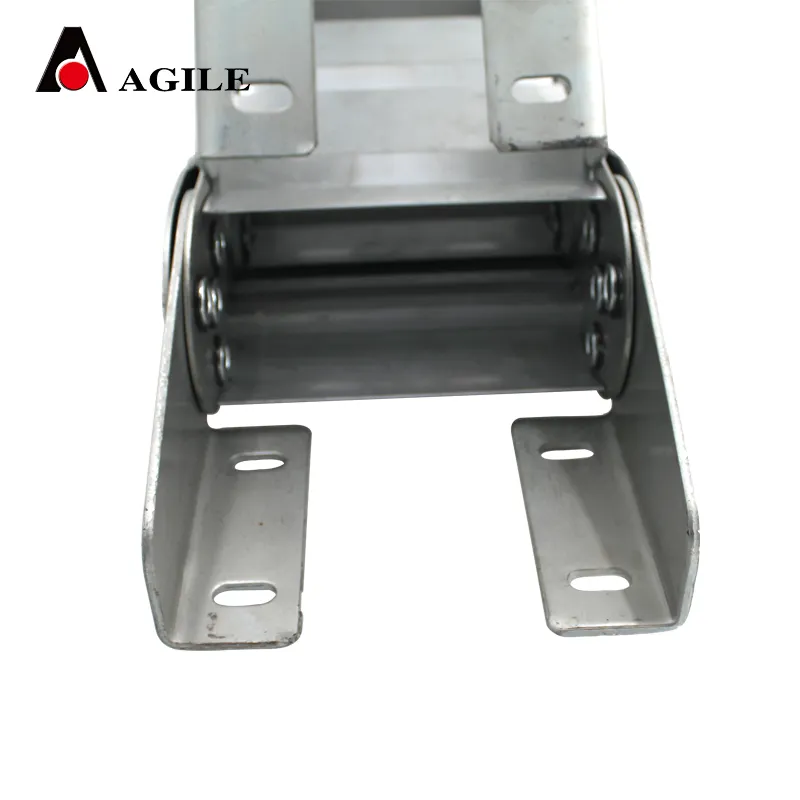Guide to Selecting the Right Size for Cable Drag Chains
Understanding Cable Drag Chain Size Charts
In the fast-paced world of automation and machinery, ensuring smooth operation while maintaining equipment integrity is paramount. One of the critical components that help achieve this is the cable drag chain. A cable drag chain, also known as a cable carrier, serves to organize and protect cables and hoses in moving applications. As industries evolve, so does the importance of selecting the appropriate size of these chains. This article delves into the significance of cable drag chain size charts, providing insights on how to use them effectively.
What is a Cable Drag Chain?
A cable drag chain is a modular system designed to guide and protect flexible cables, hoses, and other components in a variety of applications, including CNC machinery, robotics, and conveyor systems. These chains allow for unrestricted movement while guarding against wear and tear, maintaining the durability and functionality of the equipment. They come in various sizes and designs, tailored to suit specific needs.
Importance of Size Selection
Selecting the correct size of the cable drag chain is vital for several reasons
1. Protection A well-fitted cable drag chain safeguards cables from abrasion, crushing, and accidental disconnection. If the chain is too loose, cables can chatter and wear out quickly; if it’s too tight, it may cause unnecessary strain on the cables.
2. Efficiency Proper sizing contributes to the efficient movement of cables. An appropriately sized chain ensures that cables do not get tangled or constrained, allowing for smooth operation.
3. Cost-effectiveness Using a size that is too large might lead to excess weight and space consumption, while a size that is too small can lead to frequent replacements and increased downtime. Both scenarios can inflate operational costs.
Reading the Cable Drag Chain Size Chart
A cable drag chain size chart typically provides detailed metrics about various chain options, including inner and outer dimensions, the maximum load capacity, and bend radius. Here’s how to interpret these metrics effectively
1. Inner Width (a) The space within the chain where the cables are housed. The width should be selected based on the total width of the cables and hoses that need to fit comfortably.
cable drag chain size chart

2. Inner Height (b) This dimension defines the height of the chain and should accommodate the cables vertically. Consider any additional shielding or connectors that might be added.
3. Outer Height (B) This metric gives an insight into the overall space the chain will occupy in your equipment.
4. Bend Radius (R) This is a critical specification as it dictates how sharply the chain can bend without causing damage to the cables. Ensure that the bend radius meets the minimum requirements of your application.
5. Max Load Capacity Each chain has a maximum load it can handle. Selecting a chain that aligns with the weight of the cables and hoses is key to preventing premature failure.
Steps to Select the Right Cable Drag Chain
1. Determine Cable Specifications Measure the diameters and quantities of cables that will be used.
2. Assess Installation Space Examine the physical space in which the drag chain will be installed, accounting for movement requirements and environmental factors.
3. Refer to the Size Chart Use the cable drag chain size chart to find compatible chains that meet both the size and load specifications necessary for your application.
4. Consider Future Needs If you're anticipating upgrades or additional cables in the future, consider selecting a slightly larger chain to allow for some flexibility.
5. Consult Experts When in doubt, consult with manufacturers or experts who can provide tailored advice based on your specific requirements.
Conclusion
In conclusion, understanding cable drag chain size charts is essential for selecting the right product that ensures efficient and safe operation of machinery. By paying attention to dimensions, load capacities, and future needs, businesses can make informed decisions that enhance performance and reduce maintenance costs. A well-chosen cable drag chain is an investment in the reliability and longevity of any automated system.








